Dia Chelsea reopens to the public following two-year renovation
The new Dia Chelsea space has reopened following a two-year renovation by Architecture Research Office with inaugural commissions by artist Lucy Raven
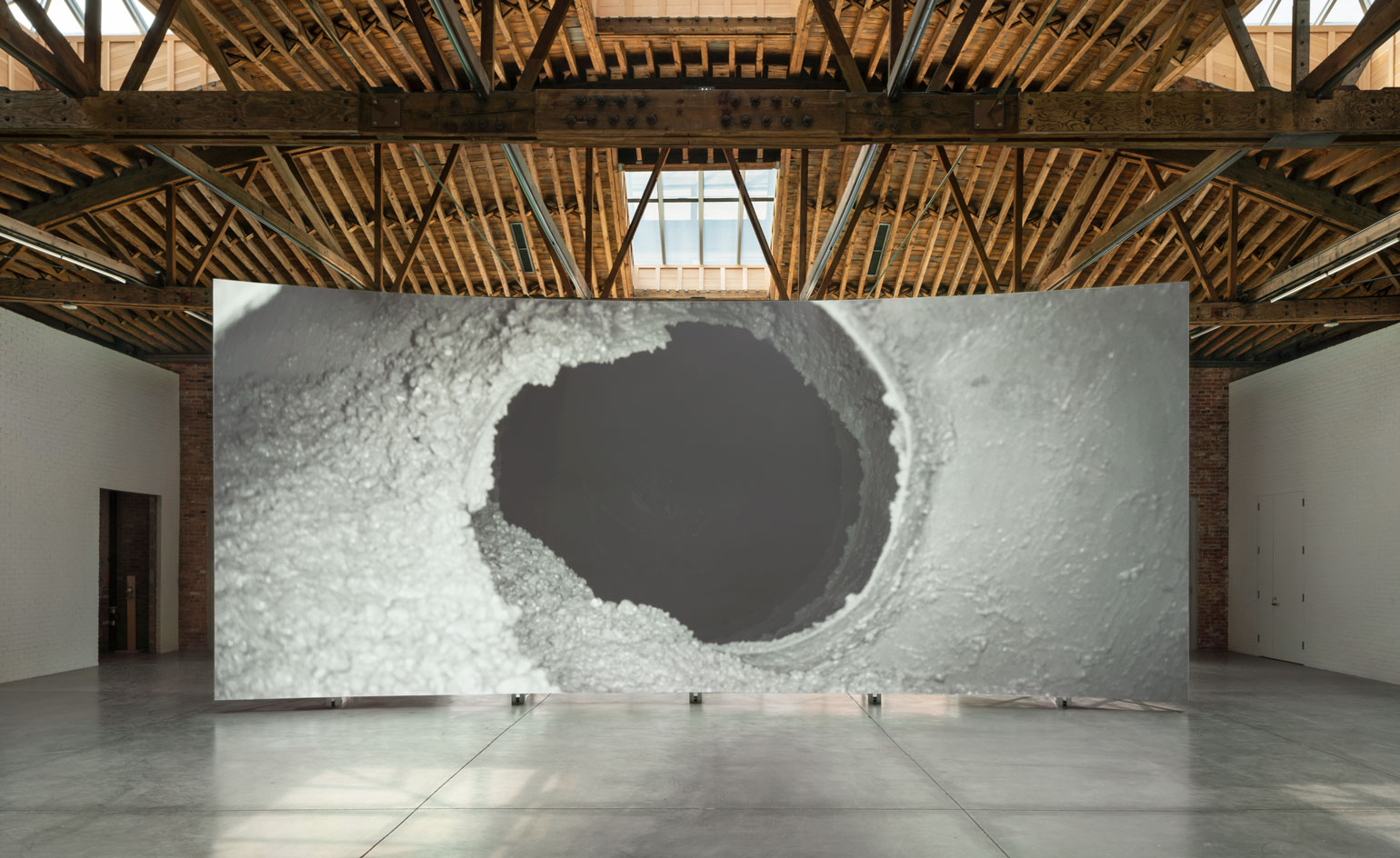
The Dia Art Foundation might always be first known for its idyllic premises upstate in Beacon, New York, but now it welcomes a new chapter in New York City with the reopening of its Chelsea foothold following an extensive two-year renovation. Armed with an expanded footprint that brings three of its former buildings together into one cohesive space, the new Dia Chelsea continues the institution’s history of repurposing and revitalising existing buildings.
Designed by Architecture Research Office (ARO), Dia Chelsea retains the character of the original Chelsea neighbourhood which Dia has been a part of since the 1980s. Coming in at 32,500 sq ft, the gallery not only offers a substantial amount of street-level exhibition space (20,000 sq ft to be exact), but also has the capacity to host public performances and educational programmes (which it will conduct both in person and online). It also sees the return of the celebrated Dia Bookstore to New York City.
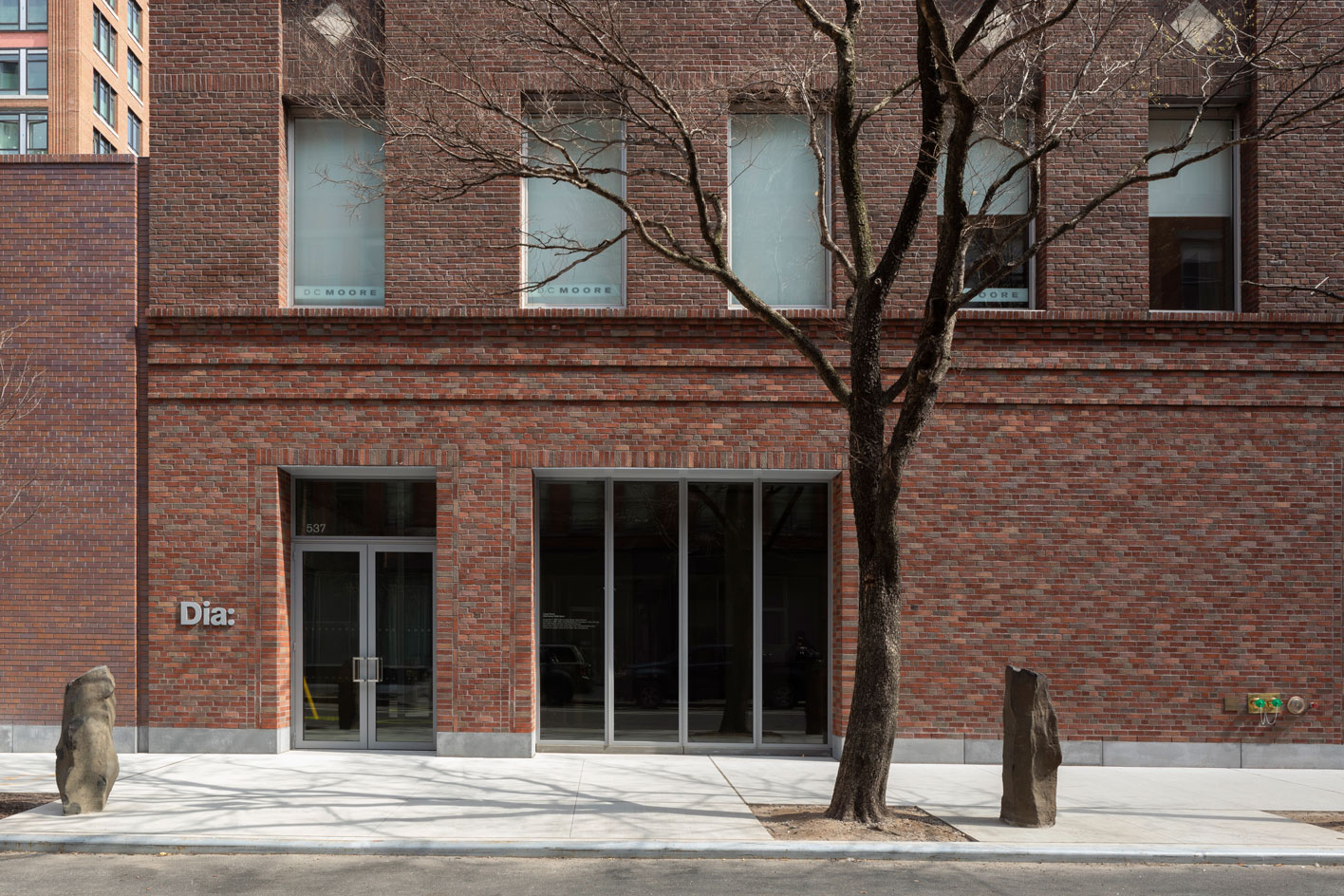

Above: Dia has extended Joseph Beuys’s 7000 Eichen (7000 Oaks) along West Twenty-Second Street, a project which began in 1982 in Germany, bringing the total number of paired basalt columns and trees to thirty-eight. Below: Inside the renovated Dia Chelsea, New York.
With such rare and dramatic environs on hand, Dia Chelsea suitably reopens with two new large-scale commissions by American artist Lucy Raven. Comprising a film Ready Mix (2021), and an installation from her Casters series (2021), the two projects address the formation and depiction of landscapes and civic spaces, specifically of the American West, and use abstraction as a means of giving them a fresh perspective.
‘Dia’s mission has always been to help artists achieve ambitious projects. In a “post-pandemic” world where funding is scarce, this goal seems more important than ever and we have been expanding our collection and exhibition programme to include a greater breadth of artists,’ shares Dia’s director, Jessica Morgan. ‘The inaugural exhibition of new work by Lucy Raven has stemmed from more than four years of working closely with Raven and the resulting show is an investigation into film, perception, and the mythologies of the American West. In fact, all of the first exhibitions in Dia Chelsea are all with artists who are women, including Camille Norment and Delcy Morelos, which will similarly be the result of many years of collaboration. The approach of long-term conversation and support of artists remains our greatest priority.’
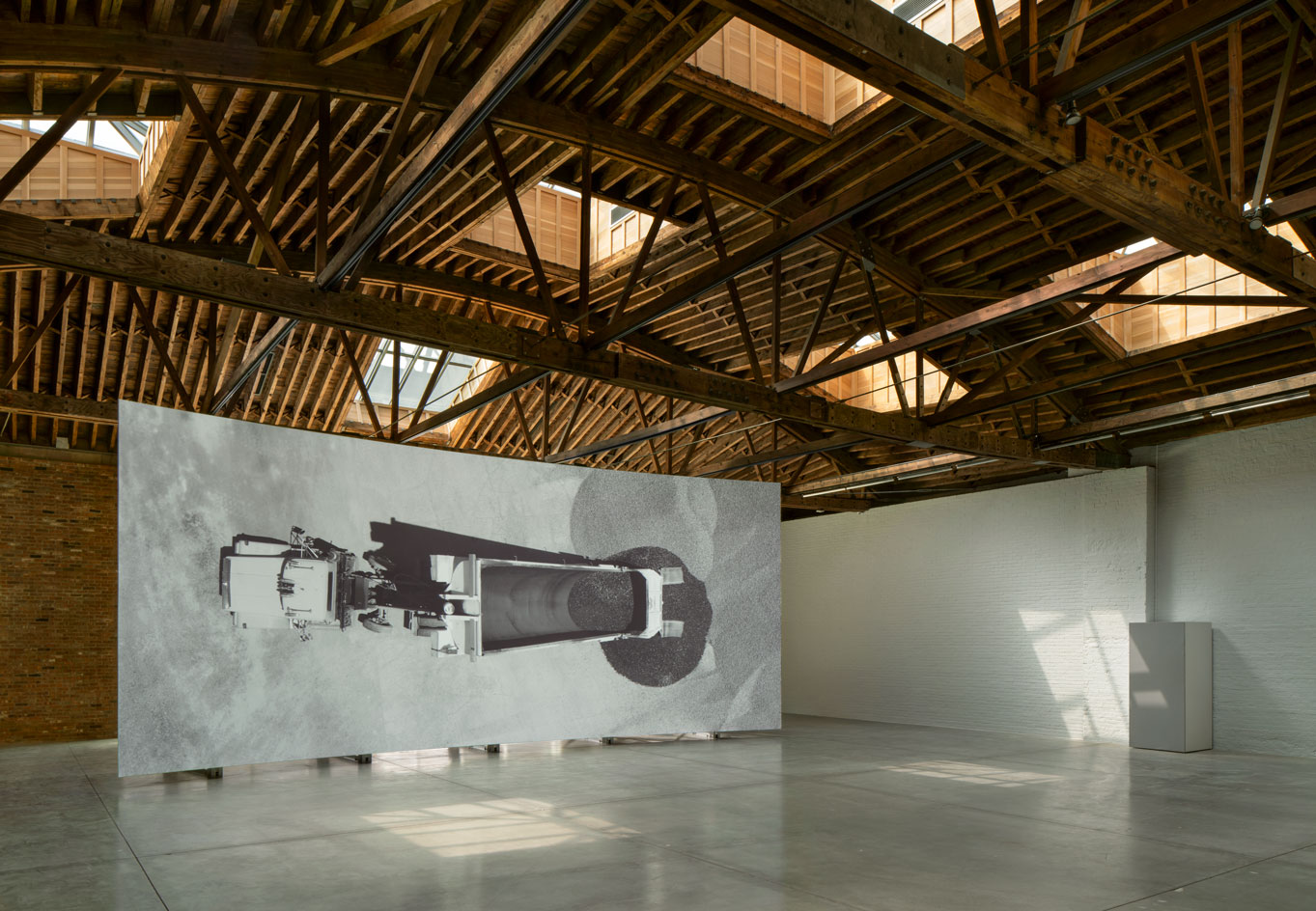
Lucy Raven, Ready Mix, 2021. Installation view, Dia Chelsea, New York City.
She continues, ‘Having exhibitions on view for extended periods offers the opportunity for long-term engagement; our exhibitions at Dia Chelsea will be on view for around nine months. We have also eliminated the admission fee at Dia Chelsea, so exhibitions will be permanently free to the public like all of our NYC sites. We felt this was incredibly important, both to encourage new visitors from the New York community, and to inspire repeat visits.’
‘We also have a distinct architectural approach in so far as we made a conscious decision with Dia Chelsea to preserve the unique qualities of these industrial buildings and not to build anew,’ she adds. ‘Our architects, ARO, have taken a ‘light touch’ approach to the buildings, retaining the natural light in the single-storey galleries from the skylights, as well as respecting the vernacular of the neighbourhood.’
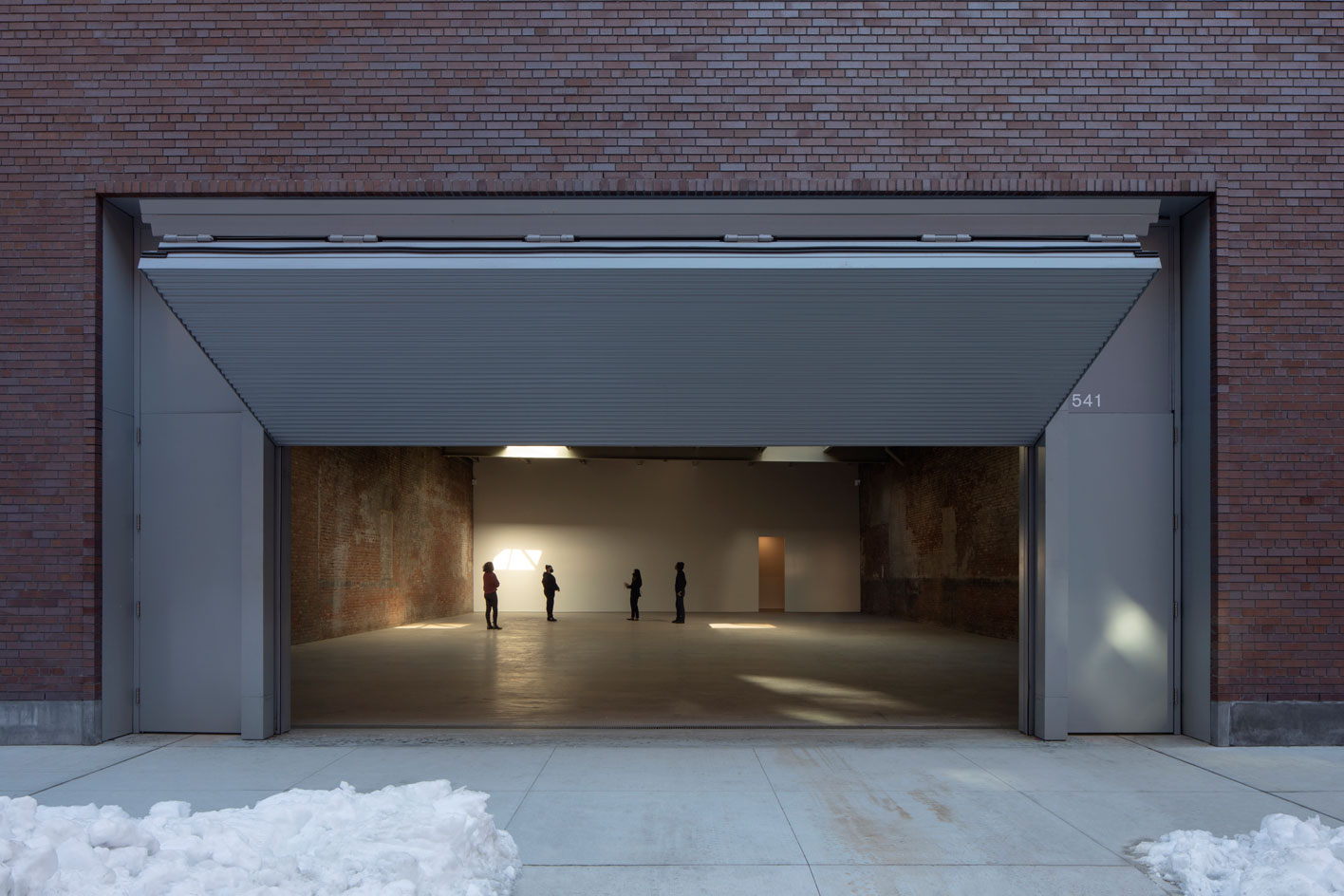
Dia Chelsea, New York.
‘The most challenging aspect of the Dia Chelsea renovation was designing three new facades to create an ensemble of distinct but related buildings,’ share ARO’s Kim Yao and Adam Yarinsky. ‘The design engages the scale and organisation of the internal spaces, addresses the functions of the openings for people and art and expresses the detailing of the brick walls. All of this comes together to present Dia’s identity, which is grounded in the character of the neighbourhood and the qualities of the existing buildings.’
In ARO’s hands, Dia’s legacy of creating exciting dialogues between art and architecture takes a more contemporary turn, particularly against the neighbourhood’s larger backdrop of soaring luxury residences that have sprung up in recent years. ARO’s work on Dia Chelsea is part of a longer-term collaboration, which includes the creation of Dia Soho, a new 2,500 sq ft exhibition space on Wooster Street, the revitalisation of two iconic Walter de Maria works, ‘The New York Earth Room’ (1977) and ‘The Broken Kilometer’ (1979) next door, and the expansion of the lower level at Dia Beacon and its surrounding landscape


Above and below: Lucy Raven, Casters X-2 + X-3, 2021. Installation views, Dia Chelsea, New York City.
‘For Dia (and in all our work) we believe that ‘design-centric’ means being strategic about what design means for Dia in terms of its history and mission and thereby define the role of architecture in the project,’ Yao and Yarinsky explain. ‘All our projects for Dia are connected by the fact that we frame our design approach to support Dia’s mission, which is centred on supporting the artists’ visions. The most visible thread is adapting and renewing the structure, materials, space and daylight of existing buildings (given Dia’s long history of adapting and reusing existing structures). Through this, the design of these buildings has reciprocity with the art.’
Morgan concludes, ‘Dia first established an exhibition space in Chelsea in 1987. With the opening of the new Dia Chelsea, I am so happy to finally give us a permanent home in this neighbourhood. It is vital that arts and culture are accessible to all and we are committed to offering an open door to everyone in our New York community and beyond.’

Lucy Raven, Ready Mix, 2021. Installation view, Dia Chelsea, New York City.
INFORMATION
Lucy Raven’s exhibition is on view until January 2022. diaart.org
Receive our daily digest of inspiration, escapism and design stories from around the world direct to your inbox.
ADDRESS
537 West 22nd Street
New York 10011
Pei-Ru Keh is a former US Editor at Wallpaper*. Born and raised in Singapore, she has been a New Yorker since 2013. Pei-Ru held various titles at Wallpaper* between 2007 and 2023. She reports on design, tech, art, architecture, fashion, beauty and lifestyle happenings in the United States, both in print and digitally. Pei-Ru took a key role in championing diversity and representation within Wallpaper's content pillars, actively seeking out stories that reflect a wide range of perspectives. She lives in Brooklyn with her husband and two children, and is currently learning how to drive.
-
 The most comprehensive showing of Nan Goldin’s photographs and films is intense and emotional
The most comprehensive showing of Nan Goldin’s photographs and films is intense and emotionalNan Goldin's moving-image work makes a heavy impact in ‘This Will Not End Well’ at Milan’s Pirelli HangarBicocca
-
 How We Host: Interior designer Heide Hendricks shows us how to throw the ultimate farmhouse fête
How We Host: Interior designer Heide Hendricks shows us how to throw the ultimate farmhouse fêteThe designer, one half of the American design firm Hendricks Churchill, delves into the art of entertaining – from pasta to playlists
-
 Arbour House is a north London home that lies low but punches high
Arbour House is a north London home that lies low but punches highArbour House by Andrei Saltykov is a low-lying Crouch End home with a striking roof structure that sets it apart
-
 Nadia Lee Cohen distils a distant American memory into an unflinching new photo book
Nadia Lee Cohen distils a distant American memory into an unflinching new photo book‘Holy Ohio’ documents the British photographer and filmmaker’s personal journey as she reconnects with distant family and her earliest American memories
-
 Out of office: The Wallpaper* editors’ picks of the week
Out of office: The Wallpaper* editors’ picks of the weekIt’s been a week of escapism: daydreams of Ghana sparked by lively local projects, glimpses of Tokyo on nostalgic film rolls, and a charming foray into the heart of Christmas as the festive season kicks off in earnest
-
 Ed Ruscha’s foray into chocolate is sweet, smart and very American
Ed Ruscha’s foray into chocolate is sweet, smart and very AmericanArt and chocolate combine deliciously in ‘Made in California’, a project from the artist with andSons Chocolatiers
-
 Inside the work of photographer Seydou Keïta, who captured portraits across West Africa
Inside the work of photographer Seydou Keïta, who captured portraits across West Africa‘Seydou Keïta: A Tactile Lens’, an exhibition at the Brooklyn Museum, New York, celebrates the 20th-century photographer
-
 Out of office: The Wallpaper* editors’ picks of the week
Out of office: The Wallpaper* editors’ picks of the weekFrom sumo wrestling to Singaporean fare, medieval manuscripts to magnetic exhibitions, the Wallpaper* team have traversed the length and breadth of culture in the capital this week
-
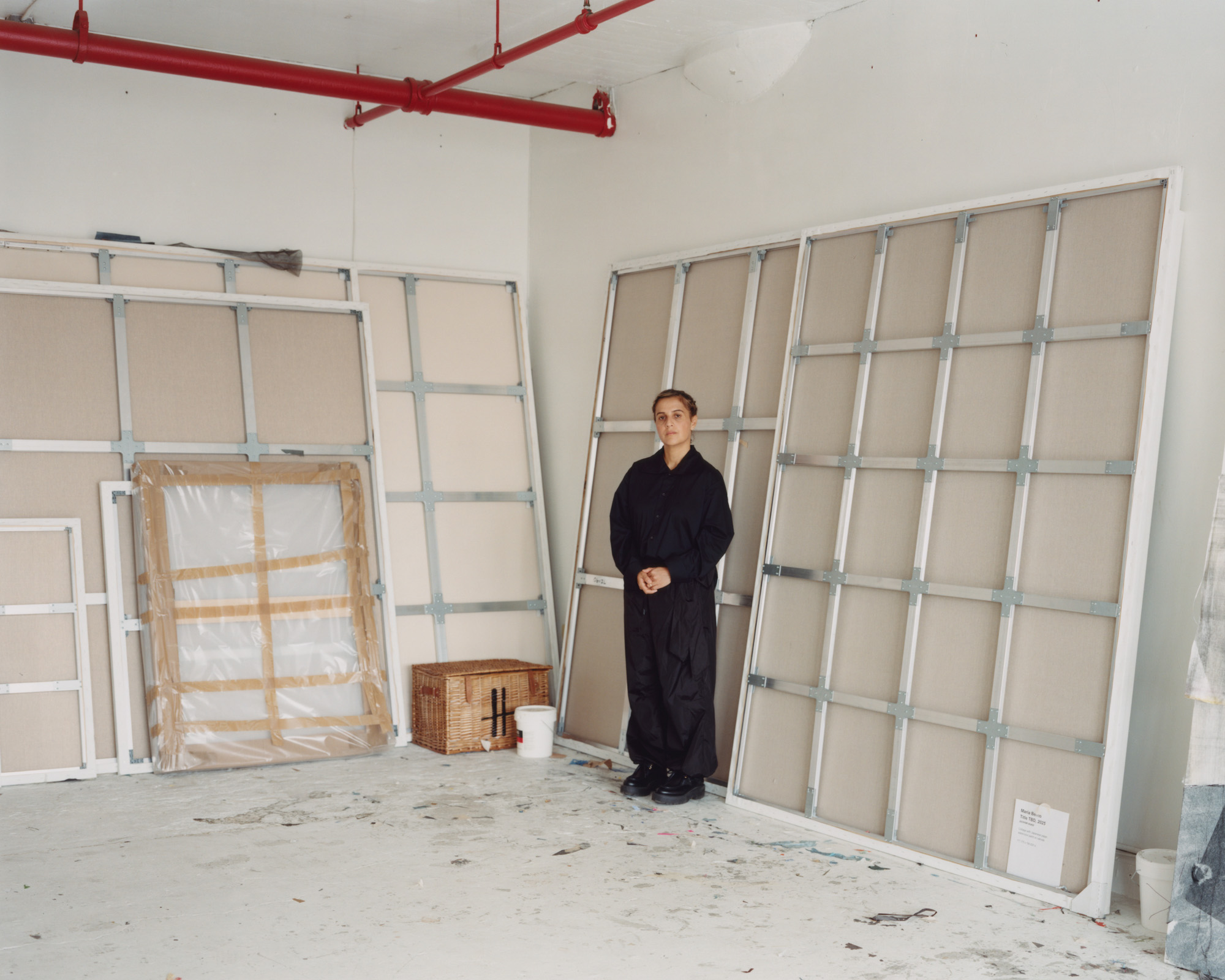 María Berrío creates fantastical worlds from Japanese-paper collages in New York
María Berrío creates fantastical worlds from Japanese-paper collages in New YorkNew York-based Colombian artist María Berrío explores a love of folklore and myth in delicate and colourful works on paper
-
 Out of office: the Wallpaper* editors’ picks of the week
Out of office: the Wallpaper* editors’ picks of the weekAs we approach Frieze, our editors have been trawling the capital's galleries. Elsewhere: a 'Wineglass' marathon, a must-see film, and a visit to a science museum
-
 June Leaf’s New York survey captures a life in motion
June Leaf’s New York survey captures a life in motionJune Leaf made art in many forms for over seven decades, with an unstoppable energy and fierce appetite leading her to rationalise life in her own terms.